New Delhi – Prime Minister Narendra Modi addressed the prestigious IATA Annual General Meeting and World Air Transport Summit at Bharat Mandapam in New Delhi, marking a significant milestone as this premier aviation event returned to India after four decades. The IATA Annual General Meeting, last held in India in 1983, brought together over 1,600 participants including top global aviation industry leaders, government officials, and international representatives.
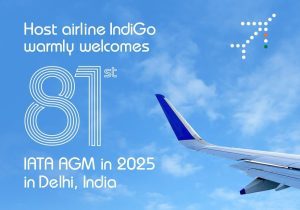
Speaking at the IATA Annual General Meeting, PM Modi welcomed international guests and emphasized the transformative changes India has undergone since the event was last held in the country. He highlighted that today’s India is more confident than ever and plays a crucial role in the global aviation ecosystem, not merely as a vast market but as a symbol of policy leadership, innovation, and inclusive development.
India’s Emergence as Global Aviation Leader
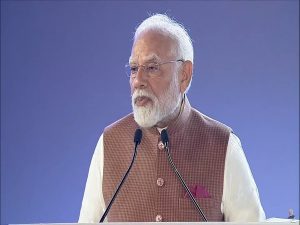

The Prime Minister’s address at the IATA Annual General Meeting underscored India’s emergence as a global leader in space-aviation convergence. He noted that the civil aviation sector has witnessed historic advancements over the past decade, which are well recognized internationally. The IATA Annual General Meeting served as a platform to showcase these achievements and outline India’s future vision for the aviation sector.
PM Modi emphasized that the IATA Annual General Meeting discussions would provide new direction to global aviation, unlocking infinite possibilities and optimizing the sector’s potential. He highlighted humanity’s remarkable ability to cover vast distances and intercontinental journeys in mere hours, noting that 21st-century aspirations continue to evolve beyond conventional travel boundaries.
Also Read: PM Modi Bengal Visit: Historic City Gas Distribution Project Launch Worth Rs. 1,010 Crore
Three Foundational Pillars of India’s Aviation Success
During his keynote address at the IATA Annual General Meeting, the Prime Minister outlined three foundational pillars driving India’s aviation sector transformation. First, India represents a vast market that reflects the country’s aspirational society rather than merely a collection of consumers. Second, the nation boasts a strong demographic and talent pool where young innovators pioneer breakthroughs in artificial intelligence, robotics, and clean energy. Third, India maintains an open and supportive policy ecosystem that enables industrial growth.
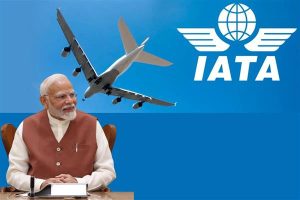

The IATA Annual General Meeting provided the perfect platform for PM Modi to emphasize that with these strengths, India is positioned to elevate its aviation sector to unprecedented heights. He highlighted that these pillars form the foundation for India’s ambitious aviation growth strategy and future development plans.
Remarkable Market Growth and Infrastructure Development
PM Modi’s presentation at the IATA Annual General Meeting highlighted India’s remarkable transformation in civil aviation. He announced that India has become the third-largest domestic aviation market globally, a significant achievement that demonstrates the sector’s rapid expansion. The IATA Annual General Meeting audience learned about the success of the UDAN scheme, which the Prime Minister called a golden chapter in Indian civil aviation history.
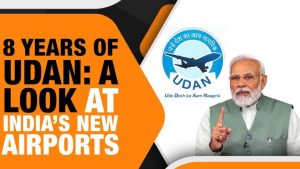

Under the UDAN initiative, over 15 million passengers have benefited from affordable air travel, enabling many citizens to fly for the first time. The IATA Annual General Meeting delegates were informed that India’s airlines continue to achieve double-digit growth, with 240 million passengers flying annually. This figure surpasses the total population of most countries worldwide, and projections indicate this number will reach 500 million passengers by 2030.
Cargo Operations and Future Projections


The IATA Annual General Meeting presentation included impressive cargo statistics, with PM Modi noting that 3.5 million metric tons of cargo are transported by air annually in India. This volume is expected to increase to 10 million metric tons by the end of this decade, representing substantial growth opportunities for the aviation sector.
These figures presented at the IATA Annual General Meeting are not merely statistics but reflect India’s immense potential. The Prime Minister emphasized that India is actively working on a futuristic roadmap to maximize this potential, with significant investments in world-class airport infrastructure development.
Airport Infrastructure Expansion
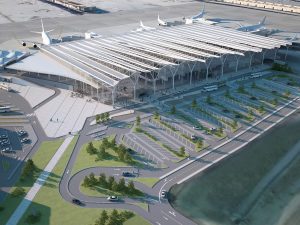

The IATA Annual General Meeting heard about India’s impressive airport infrastructure expansion. In 2014, the country had 74 operational airports, which has now expanded to 162 airports. This dramatic increase demonstrates the government’s commitment to enhancing connectivity and accessibility across the nation.
PM Modi informed the IATA Annual General Meeting participants that Indian carriers have placed orders for over 2,000 new aircraft, signaling rapid growth in the sector. He emphasized that this represents just the beginning, as India’s aviation industry stands at a crucial takeoff point, set to achieve unprecedented heights.
Technology Innovation and Digital Solutions
The IATA Annual General Meeting audience learned about India’s technological innovations in aviation. PM Modi urged international guests to familiarize themselves with the Digi Yatra app, highlighting it as a pioneering example of digital aviation. The application provides a complete, seamless travel solution using facial verification technology, enabling passengers to navigate from airport entry to boarding gates without requiring paper documents or ID display.
During the IATA Annual General Meeting presentation, the Prime Minister emphasized that India’s innovations and experience in serving a large population can benefit many countries. He positioned Digi Yatra as a secure and smart solution, serving as a model of inspiration for the Global South.
Manufacturing and Regulatory Reforms
The IATA Annual General Meeting highlighted India’s commitment to becoming a global manufacturing hub through strategic initiatives. PM Modi mentioned that Mission Manufacturing was announced in the budget, reinforcing India’s focus on industrial growth. The Protection of Interest in Aircraft Objects Bill, passed in Parliament, grants legal authority to the Cape Town Convention in India.
This legislation, discussed at the IATA Annual General Meeting, opens new opportunities for global aircraft leasing companies in India. The Prime Minister also pointed to incentives offered at Gift City, stating that these measures have made India an attractive destination for aircraft leasing operations.
MRO Sector Development
The IATA Annual General Meeting presentation emphasized the emergence of Maintenance, Repair, and Overhaul (MRO) as a sunrise sector. India is accelerating efforts to become a global hub for aircraft maintenance, with facilities increasing from 96 in 2014 to 154 currently. The sector benefits from 100% FDI under the automatic route, GST reduction, and tax rationalization measures.
PM Modi outlined India’s goal to establish a $4 billion MRO hub by 2030 during the IATA Annual General Meeting, reinforcing the nation’s aviation growth strategy and positioning India as a comprehensive aviation services provider.
Inclusive Growth and Safety Standards
The IATA Annual General Meeting heard about India’s inclusive aviation model, with over 15% of pilots being women, three times the global average. While the global average of women in cabin crew is around 70%, India’s figure stands at 86%. Women engineers in India’s MRO sector also exceed global averages, demonstrating growing female participation in the industry.
PM Modi emphasized at the IATA Annual General Meeting that aviation safety remains India’s top priority. India has aligned its regulations with ICAO’s global standards, and ICAO’s recent safety audit recognized India’s efforts in strengthening aviation security. The adoption of the Delhi Declaration at the Asia-Pacific Ministerial Conference further demonstrates India’s commitment to global aviation excellence.
The IATA Annual General Meeting concluded with PM Modi reaffirming India’s support for Open Skies and Global Connectivity, advocating for a more connected and accessible aviation network that benefits all stakeholders in the global aviation ecosystem.

